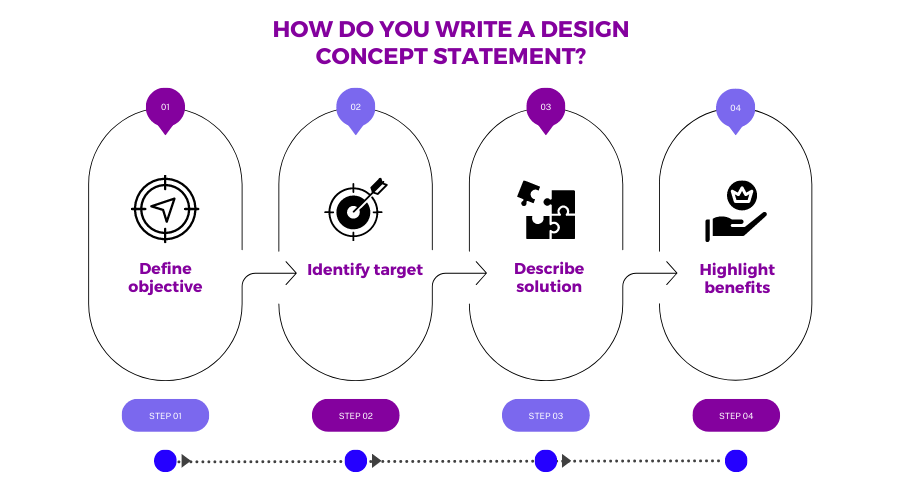
What is a Design Concept?
Design Concept Definition
A design concept is a compilation of sketches, photographs, and a written statement that explains the primary idea behind a product’s design.
A design concept is a basis upon which a product gets built. A good design concept constitutes a collection of mood boards, rough sketches, ideas, and images. Perhaps even text that could potentially add value to the final product’s design.
It helps keep track of the creative process so that the best design principles you can apply meet the target population’s needs.
A compelling design concept makes the goal of the product and vision of the company very evident. It not only helps build brands and gain trust but also boosts the growth and sales of the company.
There needs to be a clear understanding of the company’s vision, the product’s goal to develop a design concept, and the problems the product aims to solve.
Moreover, there should be appropriate brand colors, a clear understanding of consumer psychology and the target population, an aesthetic style, and clarity of the client’s needs.
Investment in creating a compelling design concept reduces the risk of stagnancy in the development process.
How to create a Design Concept?
Step 1: Identifying the Problem
The first step to creating a design concept is identifying the problem one aims to solve.
It will help gain clarity over other related things like what the product is for and how it solves the problem. It will also help to understand what type of customers the product will target.
Step 2: Market research and Competitor Analysis
Competitor analysis and market research should get prioritized. The aim is to identify the unique selling proposition. The proposition that a product can bring to the market or changes you can make in the existing product to make it catch the eye.
Moreover, several design options should get considered. That is to choose the most suitable one for user-friendliness and appealing aesthetics.
You can gather valuable insights and critical information by using product analysis and understanding competitors’ mistakes in the past.
Moreover, you can distribute in-built product surveys to better understand the user journey and expectations.
Step 3: Visual and Textual Design Concept
The next step involves drawing the visual design concept and textual design concept statement. It is ideal for keeping it straightforward so that anyone can understand it.
The visual elements consist of sketches, diagrams, hierarchy, flow charts, layouts, etc., which will demonstrate the user journey and their interaction with the product. There are exclusive product management tools that can help you along the process.
Step 4: Seeking inspiration and feedback
The next step involves looking for reference material to seek inspiration and collating sample design elements to brainstorm ideas. Thereby making the product stand out amidst the existing ones.
The reference material can be absolutely anything and everything that inspires designers to innovate ideas. Moreover, client feedback can be welcomed or voluntarily gathered to enhance the process.
Step 5: Reviewing the Design Concept
The last step comprises reviewing the design concepts gathered to eliminate unnecessary or repetitive data and filter it out for quality purposes.
Research may also reveal that some ideas are unsuitable for the available skills and resources. Thus, this has to be before the product development begins to prevent wasting time and effort.

Why is the Design Concept important?
A design concept is the product’s overall vision. From the early conceptual design process through implementation, it depicts the overall design objective. It gives direction to everyone on the product team.
Establishing a detailed and cohesive design approach also simplifies future selections.
You can do less thinking later if you summarize your project into a well-thought-out design concept since you have already made significant decisions.
You understand they fit your product criteria. All you have to do now is stick to the strategy.
The design concept is the answer to a problematic issue. If you’re working on a project, you have project goals and objectives that outline what will make it successful.
You have a list of requirements and desires. You’ve got a budget, an approximate schedule, and a location.
This project data comes together to produce your project requirements, which a design concept must meet.

What is a Design Concept example?
The Amazon logo concept is brilliant. Since it shows Amazon as a one-stop shop for everything from A to Z. The arrow’s shape also represents a smile, emphasizing its goal of keeping customers happy.
The majority of product designers‘ ideas depend on usefulness. However, the design competition provided Coca-Cola with a much-appreciated glass container.
Glass Root Company, the contest winner, created this design based on the idea of “an extended cocoa bean with unique ribs.”
FAQs
Design concepts get divided into three categories. Architectural design, preliminary or high-level design, and detailed design are the three types of designs.
To test design concepts, you can utilize methods like test brand and personality, semantic differential survey, competition testing, and first-click tests.
